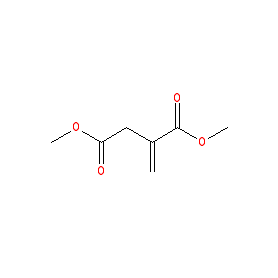|
Synonyms: dimethylitaconate | itaconic acid dimethyl ester
Compound class:
Synthetic organic
Comment: Dimethyl itaconate is a membrane-permeable derivative of the immunoregulatory metabolite itaconate. Itaconate is one of the most highly induced metabolites produced when activated macrophages undergo metabolic remodeling. Itaconate acts as a major physiological regulator of metabolic switching and effector functions of inflammatory macrophages. Itaconate and dimethyl itaconate inhibit production of IL-6 and IL-12 (secondary transcriptional response), but not TNF (a primary transcriptional response) following Toll-like receptor stimulation [4].
Itaconate has been found to promote an electrophilic stress response (i.e. a rapid adaptive defense response) [1]. An electrophilic stress response involves various mechanisms, including the nuclear translocation of the redox-sensitive transcription factor Nrf2 (nuclear factor E2-related factor 2), which senses electrophilic and oxidative stresses and protects against cellular damage via Kelch-like ECH-associated protein 1 (Keap1) [2-3,5]. Both itaconate and dimethyl itaconate induce Nrf2-dependent and -independent responses, the Nrf2-independent response being that which involves regulation of IκBζ [1]. |
|
|||||||||||||||||||||||||||||||||||
| Immunopharmacology Comments |
| Itaconate and derivatives regulate the IκBζ-ATF3 inflammatory axis [1]. Demonstration that dimethyl itaconate acts as a potent inhibitor of IL-17-IκBζ-driven skin pathology in a mouse model of psoriasis suggests that this pathway coud offer a novel mechanistic approach to the treatment of IL-17-IκBζ-mediated autoimmune diseases. |








